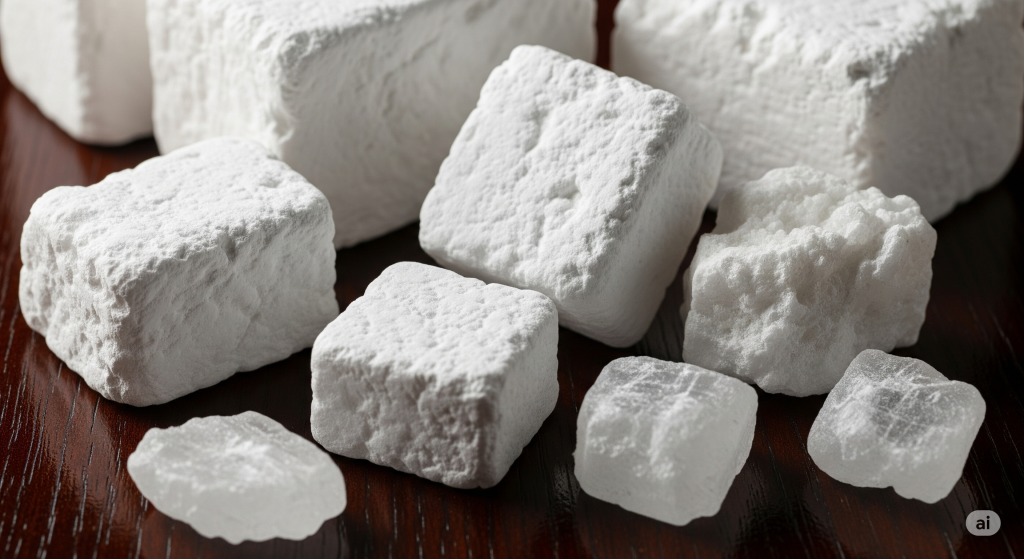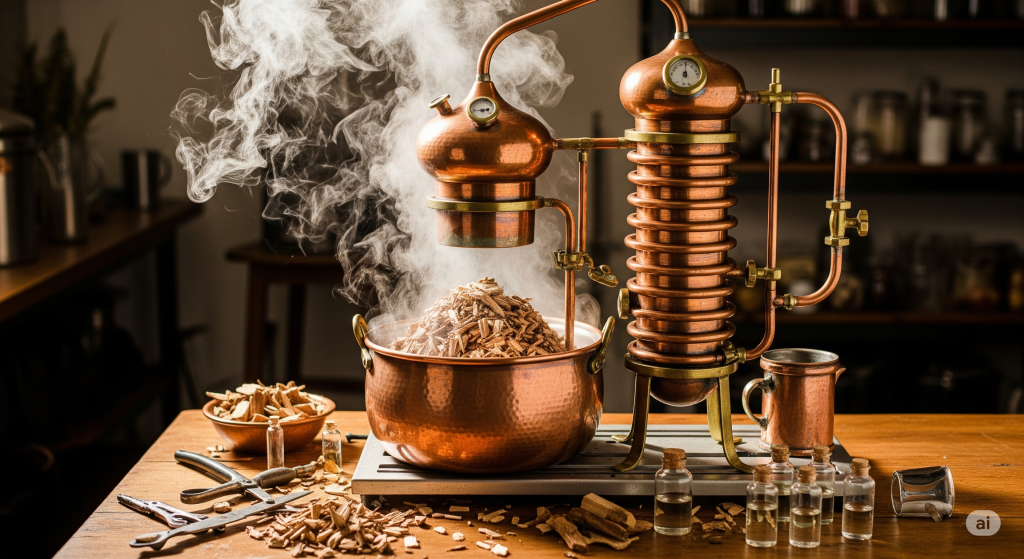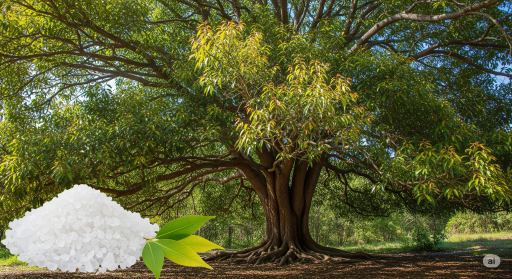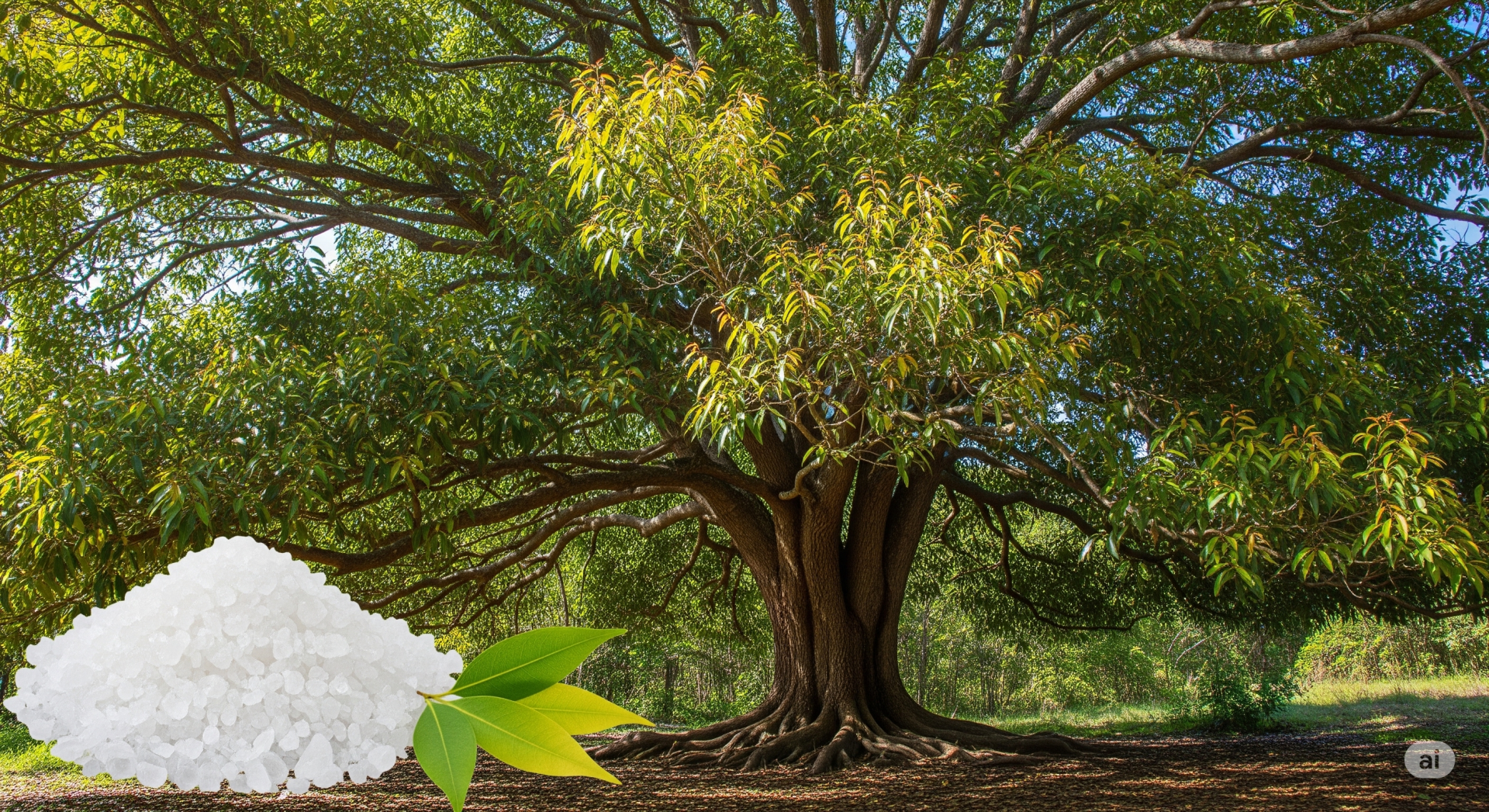Many homes have a strong, fresh scent of camphor. People use it in rituals to chase bugs away from their clothes, or rub it into balms when they’re battling a cold or sore muscles. But, really, what is this strange white, waxy stuff anyway? What goes into it? And who came up with the idea to make it in the first place?
It is fascinating to see the journey that camphor takes from its natural source all the way down to a small block in your hands. Ancient traditions and modern science are involved. Camphor is made in two ways: the natural way, using a specific tree; and the modern method, using a chemical reaction. This article will walk you through the two methods using simple and easy to understand steps. We will look at how it is harvested from nature, and how scientists make it in the lab. Discover the secrets of how camphor is produced.
What is Camphor Exactly
Let’s first understand what camphor actually is. Camphor is a natural compound with a strong scent and waxy texture. It’s like a solid fragrance. Its most intriguing property is its ability to undergo Sublimation. It is for this reason that you can smell camphor blocks from across the room, and they slowly disappear over time if left in the open.
Camphor totally belongs to that group of chemicals called terpenes—plants basically make these things, and they’re the reason stuff like lavender or pine trees smell the way they do. We actually hunt down a special camphor, either sourced from a particular place or whipped up with a certain method, just so we can get that pure, knockout scent. That’s the magic right there. Let’s now look at how people have made camphor in the traditional, natural manner for centuries.
Natural Method of Making Camphor From the Camphor Tree
Traditional camphor comes from a beautiful evergreen called the Camphor Laurel. ( C. camphora). This tree is indigenous to East Asia. It’s most common in China, Japan and Taiwan. That oil’s all over the tree—leaves, twigs, wood, the whole deal. People have been pulling it out for ages. This is how they do it.
Step 1: Harvesting Wood
First, you need to extract the raw material. People choose trees at least 50 years of age for the best results. A tree that is older contains more camphor oil. This means you will get more camphor.
The workers carefully choose the trees before cut it down. The trunk, branches and roots are all used. This traditional method does not waste anything. The woody pieces are the key to unlocking camphor.

Step 2: Chop the wood into small pieces
You can not use the large logs as is. To release the oil, they need to increase surface area. Workers must chop large wood pieces, roots and branches into chips or flakes.
Imagine making tea. Instead of using a whole branch, you can use small tea leaves (or a teabag) or a teabag. Smaller pieces of tea allow hot water to reach more parts, which releases more color and flavor. Tiny wood chips help steam escape from the tea faster.
Step 3 – Steam Distillation: The Magic Step
It is the most crucial part of the process. This process—Steam Distillation—uses steam to pull oil right out of the wood.
- How to Set Up the Still: Basically, you dump camphor wood chips into a big still—think huge metal pot. Steam rushes in one end, vapor shoots out the other. That’s pretty much it.
- Boiling water: Below the still or right next to it, they heat a large quantity of water in order to produce steam.
- Steaming through the wood: The steam is directed into the still where it passes up and through the wood chips.
- Release the Camphor: Hot steam causes the wood chips to heat up and turn the camphor oil into a vapor. This camphor gas then mixes with steam.
- Vapor Exits: Because the mixture of camphor and steam vapor is lighter, it will rise and escape the still via a pipe on top.
Read the Niir project report – Camphor (Powder & Tablets) – Manufacturing Plant, Detailed Project Report
Step 4: Cooling down and collecting the Camphor
The camphor has now been converted to a vapor, which is mixed with steam. This process is called condensing.
Condenser is the name given to a tube or chamber that cools down hot vapor. The condenser, which is usually kept cold by cold water flowing outside it, can be used to cool the hot vapor mixture. The hot vapor cools quickly when it passes through the condenser.
The camphor vapor solidifies as the steam cools. Camphor does not dissolve in water. It separates easily from water because of this. This mixture is water mixed with raw, flaky crystals of camphor. The raw material is usually brownish or off white and requires one more step before it becomes the pure white we know.
Step 5: Purifying Raw Camphor
It contains some leftover oil and other impurities from the wood. The raw camphor collected from the still contains a little oil left over and other impurities. Purification is necessary to get pure white camphor.
Sublimation is a common purification method. It uses the same property that we discussed earlier. Camphor is converted directly to a gas leaving behind the impurities. This pure camphor gas, when it touches the surface of the container at the top, turns into beautiful white crystals. The final product is ready to be pressed in blocks or tablets.
Want To Start Camphor Manufacturing: Best Business Ideas
Modern Method of Making Synthetic Camphor
The natural method, which is still in use today, requires the removal of many trees. Scientists developed a method to produce camphor in the laboratory to meet the global demand and protect forests. This is synthetic Camphor.
In a way, synthetic camphor also comes from a tree! In a sense, then, synthetic camphor is also derived from trees!
Scientists use a chemical called alphapinene to make turpentine. It is this compound that gives pines their woody, fresh smell. Scientists cleverly rearrange atoms within the alpha-pinene to create camphor.
You can imagine it as building with LEGO bricks, even though the exact chemistry of camphor is complex. Scientists begin with alpha-pinene’s structure and then, by using other chemicals, controlling temperature and pressure and forming new connections, they build the exact structure for camphor.
This process is very efficient and allows large-scale production.
Read Our Book: Modern Technology of Essential Oils, Aromatic Chemicals & Perfumery Compounds with Formulae & Processes, 2nd Edition
This book covers the production and formulation of various essential oils and aromatic chemicals, which is directly relevant to the manufacturing of camphor.
Fun Facts
- Edible vs. Synthetic: People sometimes toss real camphor—straight from trees—into Indian sweets. Not a lot, just a pinch. Don’t even think about swapping in synthetic camphor, though. That junk’s toxic if you eat it. Seriously, hard pass.
- A Natural Repellent for Insects: Camphor’s strong scent confuses pests such as moths and cockroaches. It is a natural alternative to mothballs.
- History: For centuries, it has been traded. Marco Polo himself mentioned it in 13th-century travelogues.
- Different colors: Different “fractions” can be produced by the initial distillation. First fractions are usually white oils. The next fraction can be either blue or yellow and has slightly different applications.
Want To Know About Which Business Idea Would Be Better For You?
Go Through Our Startup Selector Tool

Conclusion – A Tale of Two Methods
Camphor’s story is a blend of natural gifts and human creativity. The natural, age-old method of steam distillation of the camphor tree is a way to honor the power of nature. It connects with a long tradition of traditional knowledge. The modern synthetic method was born out of scientific discovery. This process transforms turpentine from pine trees into camphor. It allows us to efficiently produce large amounts of camphor and help conserve the forest.
It is a versatile and valuable substance, whether it comes from the crystals of a tree that’s been around for 50 years or a pure synthetic version made in a laboratory. This simple white block is a fascinating substance with a long and rich history. From its religious role to its healing touch in medicine, and its protection power in our wardrobes, it has an interesting and complex story. Next time you breathe in its powerful, distinctive aroma, you will know the amazing journey it took to reach you.
FAQs About How Camphor Is Made
Q1 – Is natural or synthetic camphor better for religious and food uses?
Synthetic camphor is preferred in industrial and medical applications.
Q2 – Can I eat camphor?
Only natural edible camphor is safe to ingest in small quantities. It is not safe to eat synthetic camphor.
Q3 – Why does camphor slowly disappear?
It is sublimated, which means it changes from a solid to a gas without melting.
Q4 – How is camphor used as medicin?
Folks use camphor to knock out muscle pain or help themselves breathe easier. You’ll spot it in chest rubs, pain balms, and those old inhalers your grandma probably swears by. Slap some on, take a deep breath, and maybe your muscles will stop screaming.
Q5 – Does the production of camphor harm our environment?
If not managed correctly, natural camphor can damage forests. Synthetic production does not require tree cutting, but it requires safe chemical handling.







